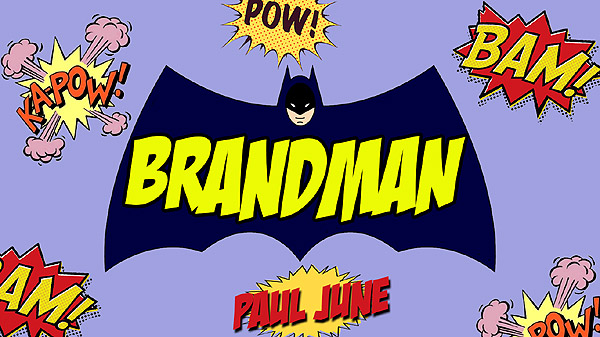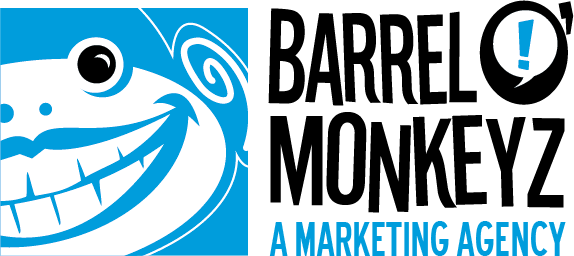Your brand is the sum of your actions, your words, how others experience you, and how they perceive you. This holds true whether you’re an individual (personal brand) or you represent an organization (company brand).
Your brand is your reputation. It sets expectations, and it’s based on first impressions and lasting impressions, whether those impressions are accurate or not.

I was in a local retailer the other day. They have at least a dozen cash registers, presumably to handle times of peak volume. The time was 4:30 pm, and the mad dash home from work was on. The only problem was, only two registers were open, the lines were long, and a cadre of 4 or 5 manager types were pacing back and forth at the front of the store, looking concerned or agitated (I’m not quite sure), but doing nothing to alleviate the congestion and long waits. I could only wonder, “Certainly, they know how to run a register don’t they?” Meanwhile, there were a plethora of “Now accepting applications” signs posted at every register, those open and those closed.
What was my impression?
It wasn’t good.
- At best, having only two registers open during the late afternoon rush made me think, “poor planning,” and “Who’s running this place?”
- At worst, I could only feel that the store was operating in “too big to fail” mode and simply didn’t care if customers were inconvenienced by long waits.
- As for the cadre of managers patrolling the front of the store, looking stressed but not lifting a finger to help (as far as I could tell), again it gave me the feeling they simply didn’t care about me and my time, and what they really cared most about was leaving the register work to the cashiers while they did . . . well whatever it is they were doing!
- At first, the “accepting applications” signs made me think, “Well good, they are understaffed and clearly trying to do something about it,” but as the minutes ticked by and no additional registers opened and customers started to complain to the cashiers, it got me to thinking the signs were more indicative of high turnover and this retailer’s inability to retain front-end staff. (After all, cashiers are the ones that typically bear the brunt of customer complaints in these situations. It can’t be fun for them!)
Now I may have misread the situation entirely. There could have been some very good reasons for the lack of open registers. Maybe there was a technical glitch preventing other lanes from opening. Maybe a cashier or two was out sick, or had to leave for an emergency, throwing the afternoon staffing plan into disarray. Maybe the manager types at the front were not trained on the registers—or maybe they weren’t managers at all, but simply observers of some sort. And maybe the “accepting applications” signs represented a sincere effort to boost staffing in the face of a retail/consumer goods economy that, for whatever reason, seems determined to slog along at a snail’s pace.
Maybe. I’m not sure. But you know what? Even if I misread the situation 100% wrong it doesn’t matter. What matters is the lasting impression I came away with. That’s what matters most, and that’s what shapes this company’s brand in my mind and undoubtedly many others.
Is my assessment fair? The store might have just been having a bad day. It happens. We all have bad days, but it just so happens this “bad day” took place when about 30 or 40 other customers all decided to stop in to make purchases at the same time.
Successful brands really can’t afford to have bad days—and if they do, they need to be able to point to past successes as a way to reassure customers the bad day was nothing more than a fluke. In this case, this retailer could not do this—at least not with me—because on two previous visits over the last month and a half, I had similar experiences. (So you see, my “brand senses” were already tingling when I arrived.)
Would I have a positive experience, as I had typically encountered with this company until only recently, and thereby negate my growing bad impressions? Or would the trend continue, reinforcing my growing negative perceptions?
You know the answer . . . and I’m sure I wasn’t the only one there who left with a bad taste in his (or her) mouth.
Of course, there are lots of retailers who do things right and I have had good experiences with them. Albertsons, Costco, REI, and Best Buy are a few that come to mind. You see, just because you are big does not mean you can’t get your hands dirty and complete the positive customer experience.
So how could this particular retailer have alleviated the situation?
Absent the most obvious solution of simply staffing up for one of the busiest times of day, one or more of the managers could have pitched in, representing an “all hands on deck” sort of mentality, which would have left me thinking they really cared. Just two more open registers would have been effective thinning out the lines. If that was not possible, then the common courtesy of an overhead announcement showing empathy for the long customer waits or explaining there was a technical glitch for the lack of open registers—something!—would have eased my mind.
Your brand is your most important asset. For many companies, especially in the service industry, it’s all they have.
- How is your brand perceived by consumers? Have you ever asked them, or do you just assume you know what they’re thinking?
- Who is your target customer and what are they looking to get from you?
- What is your brand promise? What is the product, service, or solution only you can deliver . . . and what are you doing to make your customers believe you can deliver it?
- What is your brand archetype—the image consumers have of you brand when they hear, see, or read about it? What image would you like them to have?
- What is your brand personality? What words best describe your brand, and which words will capture the minds and emotions of your target customers?
Successful brands connect with their customers in positive ways on both good days and bad. This connection is what forms the basis for the story of their brand, and we all like stories with happy endings. If you’re brand is underperforming, perhaps it’s because the brand you “think” you have or need, isn’t aligned with the brand the public actually perceives.
How do you reinforce the story of your brand every day?
Share your experiences here (and if you care to guess who my recent experience was with, leave a comment and I just might reveal their identity!)

Trackbacks/Pingbacks